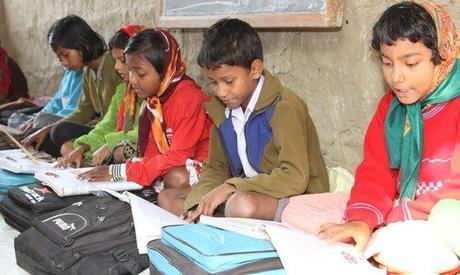 Children from poorer section in India after completing 4 years of school remain illiterate. This is the finding of UNESCO. According to the report, it was found out that about ninety percent of the children remain uneducated even after completing four years of school. Besides, only forty-four percent of rural students in class V in the states of Tamil Nadu and Maharashtra could perform two-digit subtraction.
Children from poorer section in India after completing 4 years of school remain illiterate. This is the finding of UNESCO. According to the report, it was found out that about ninety percent of the children remain uneducated even after completing four years of school. Besides, only forty-four percent of rural students in class V in the states of Tamil Nadu and Maharashtra could perform two-digit subtraction.
Reporting on trends in financing the Education For All (EFA), the report however states that in India, the state governments are grappling with various ways for relocating their education budgets to those children who are mostly in need of. But the allocations per child do not reflect the costs of delivering quality education to the marginalized section of the community. The education per pupil in Kerala was roughly about $685 and in Bihar the figure was only $100.
The report suggests that the new goals of EFA after 2015 must set a target for all the countries for allocating at least six percent of GNP to education and at least twenty percent of total government expenditure on the education. Although India is one of the ten countries, which have made quick progress in lessening the number of children out of school in the recent years, the expansion has even created a crisis in learning—a phenomenon, which is apparent in several parts of the world that results in 250 million children not being able to learn the basics globally, 1/3rd of whom are in West and South Asia. A reason for this learning crisis is probably the teacher governance.
The progress is not fast at all and this has been noticed especially for the disadvantaged. The pace in which universal primary education, youth literacy and lower secondary education is being achieved is woefully slow, particularly for the disadvantaged. Their performance level in maths is still a problem area. Only forty-four percent of these children in Maharashtra and fifty-three percent in Tamil Nadu could perform a two-digit subtraction. Moreover, there is wide disparity between the poorer and richer states in rural India as well. In Uttar Pradesh only seventy percent of the poor kids make it to standard V while almost all from the rich households can do so. In Madhya Pradesh, about eighty-five percent of the poor pupils enter Standard V in comparison to ninety-six percent of the rich children. With a supplementary education programme in India, specialized coaching and support to needy children who are attending regular schools will be provided from now on and the community and families will be made aware of the need for investing in the education of their child.


